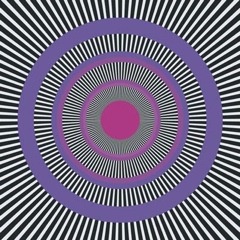Beauty and the Brain: The Puzzle
Tim Parks
Isia Leviant: Enigma, 1981What happens in the brain when we look at a painting, listen to music, read a book? This was the subject of Neuroesthetics: When Art and the Brain Collide, a workshop conference at IULM University Milan bringing together a mix of neurobiologists and art historians. The atmosphere was tense and expectant, the art folk anxious that they wouldn’t understand a word, the biologists concerned that their work would seem underwhelming and wrongheaded.
Star speaker Semir Zeki, professor of neuroesthetics at University College London, set the ball rolling with an extraordinarily defensive performance. Art critics accused him of being reductive but hard science could only proceed step by step on the basis of demonstrable proof. He quoted and rubbished a sentence from Gille Deleuze on Francis Bacon:
The figure … acts immediately upon the nervous system, which is of the flesh, whereas abstract form is addressed to the head, and acts through the intermediary of the brain, which is closer to the bone.
How could one take seriously anyone who used terms so loosely? “The brain is part of the nervous system!”
What Zeki was trying to demonstrate was the brain’s response to ambiguity, a major element in most aesthetic experience. He showed slides of the Rubin vase, the Kanizsa cube and triangle, and Isia Leviant’s “Enigma.” In the case of the vase and the cube, the brain could see only one of the two alternatives at a time, but it could never shake off the other and would keep switching back and forth, without resolving the issue, a characteristic that Salvador Dali had exploited in his “paranoiac critical” paintings. He went on to show slides of which parts of the brain were activated when responding to such stimuli.
“If you tell me,” responded Ron Chrisley, “which circuits of a computer are active when its chess program moves knight to queen’s bishop three, you haven’t told me much, have you?”
It was that kind of conference.
Various speakers wondered whether robots could be endowed with an aesthetic sense. An experiment was described in which neurons from a rat’s brain in a lab in Australia were connected via the Internet to digital cameras in remote parts of the world, one week New York, the next Paris. When a camera focused on a face the neuron response triggered an artificial arm that drew on paper for as long as the stimulus continued. The results were not impressive. In one case the artificial arm ripped up the paper. Someone suggested that perhaps the aesthetic experience here was watching the machine at work, not contemplating the images it produced.
What was most disturbing was the rather crude notion of “aesthetic experience” that the scientists seemed to entertain. The word “beauty” was used as if we knew what it meant. Zeki spoke of art constituting a form of knowledge that would refine our ability to act and hence increase our chances of reproduction. There was no discussion of the fact that an art critic might have a more complex response to, say, Mondrian than someone who had little experience of painting.
Above all, there was no awareness of the positioning of each aesthetic experience within the accumulating history of viewer, listener or reader. When I remarked in the closing discussion that none of the speaker’s experiments had tackled the word, the poem, the novel, or more generally the aesthetic of narrative, a voice behind me cried out, “Thank God!”
The high points, for those eager to follow these things up, were Ron Chrisley’s paper “How Aesthetics Might Assist a Neuroscience of Sensory Experience” and Riccardo Manzotti’s “Art, Brain and the World: A Physical Unity.” Describing the coining of the word “neuroesthetics” and the claim to say much about aesthetic experience as largely a PR coup by the Zeki camp, Chrisley concentrated on the specific task of describing how a robot might represent space to itself and navigate through it, while Manzotti rejected the very idea of consciousness as representation, insisting rather on the constant physical interaction of mind and environment through sight, sound, smell, touch, and taste.
Reassuringly, all differences dissolved when we tasted dinner, during which there was much discussion of the problem of raising funding.
Offering multiple perspectives from many fields of human inquiry that may move all of us toward a more integrated understanding of who we are as conscious beings.
Pages
▼
Thursday, October 29, 2009
Tim Parks - Beauty and the Brain: The Puzzle (NYRB)
Very cool article/review from the New York Review of Books blog. Sounds like it would have been a great conference for people like me who enjoy the neuroscience geekiness.
Tags:

No comments:
Post a Comment